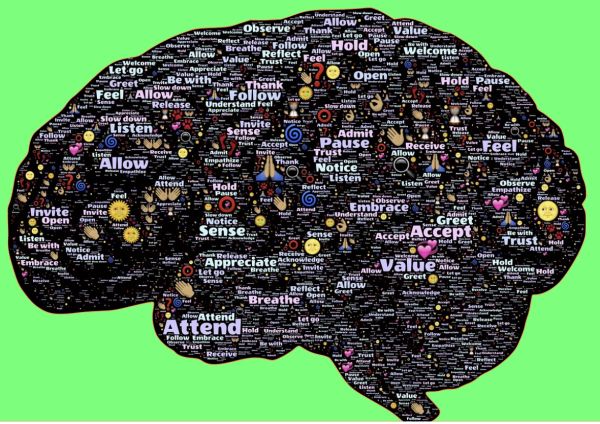
In Buddhism, walking as meditation is often called kinhin. It is a movement between periods of sitting meditation. The practice is common in Mahayana, Theravada and other traditions. Many benefits can be derived from walking meditation. Walking can be more beneficial than sitting, and it is possible to simply walk between two points. This article discusses the benefits that walking can bring to meditation. It is worth noting why Buddhists choose walking as a form or meditation.
Walking can be used as a meditation tool. Find a quiet place and then stand at the end. Open your eyes gently and notice your own body. When you are walking, take note of how the pressure feels on your feet. This process can be repeated as you walk. This will help you become calmer and more aware. This meditation can also be used to help you feel less overwhelmed. These links will provide additional information on walking meditation.

You can practice walking meditation by being still for a brief time. You can spend a few seconds standing still. Then, notice your body. You can continue doing this for between ten and twenty minutes. Although you can walk longer distances, it's important to keep your pace in line with your body. Your mind will wander less when you are walking. This doesn't mean your mind is wandering. It simply means your mind needs time for you to settle down.
If you are walking to meditate, take the time to slow down and think about your thoughts. Don't analyze the thoughts that come to you, just notice them. You might be able to learn something from every encounter. Doing this will help you bring awareness to your everyday life. It's vital to be aware and present in your environment. You can start to practice walking as meditation by following these steps.
When walking as meditation, be mindful of your body. Your body needs space to be relaxed and free of distractions, and walking in nature can help you do that. Being aware of your emotions and feelings can help you be more mindful. When you let go of your thoughts, you will feel more at ease and peaceful. You'll be amazed at how much you feel relaxed when you walk like a meditation.

When practicing walking as meditation, you should pay attention to everything around you. Be aware of how your legs move and the ground around you. Throughout the whole process of walking, your body should be aware. When you are walking, be aware of what thoughts are going through your mind. This will help to put your mind at ease and allow you to concentrate more on the moment. Mindfulness can be practiced by taking a walk. It is not meant to replace regular meditation sessions.
FAQ
How to measure body weight?
A Body Fat Analyzer can be used to measure body fat. These devices are used to measure body fat for people who want weight loss.
How much should I weigh for my height and age? BMI calculator and chart
A body mass index calculator (BMI) is the best way to find out how much weight you should lose. Healthy BMI ranges between 18.5 to 24.9. If you want to lose weight, then you should aim to drop about 10 pounds per month. Simply enter your height, weight and desired BMI into the BMI calculator to calculate it.
This BMI chart will help you determine if your body is overweight or obese.
What's the difference between fat or sugar?
Fat is an important energy source, which comes from food. Sugar is a sweet substance that can be found naturally in fruits or vegetables. Both sugars and fats have the same calories. However, fats contain more than twice as many calories as sugars.
Fats are stored in your body and can cause obesity. They can lead to cholesterol buildup in the arteries, which could cause heart attacks or strokes.
Sugars are quickly absorbed and provide instant energy. This causes blood glucose levels to rise. High blood glucose levels can pose a danger because they increase the chance of developing type II Diabetes.
What is the best food for me?
Many factors influence which diet is best for you. These include your age, gender and weight. Consider how much energy and low-calorie foods you consume, as well as whether or not you are a fan of fruits and vegetables.
Intermittent Fasting is an alternative to traditional fasting if you are looking to lose weight. Intermittent fasting is a way to eat only certain meals during the day instead of three large meals. This might be better for you than traditional diets, which have daily calorie counts.
Intermittent fasting is believed to increase insulin sensitivity. It may also reduce inflammation. This may lead to a decrease in diabetes risk and blood sugar levels. Other research suggests that intermittent fasting may promote fat loss and improve overall body composition.
What are 10 healthy behaviors?
-
Every day, eat breakfast.
-
Don't skip meals.
-
You should eat a balanced diet.
-
Drink plenty of water
-
Take care of your body.
-
Get enough rest.
-
Avoid junk food.
-
Do some type of exercise daily.
-
Have fun
-
Make new friends
Here are 7 ways to live a healthy lifestyle.
-
You should eat right
-
Exercise regularly
-
Sleep well
-
Drink lots of water
-
Get enough sleep
-
Be happy
-
Smile often
Statistics
- WHO recommends reducing saturated fats to less than 10% of total energy intake; reducing trans-fats to less than 1% of total energy intake; and replacing both saturated fats and trans-fats to unsaturated fats. (who.int)
- According to the Physical Activity Guidelines for Americans, we should strive for at least 150 minutes of moderate intensity activity each week (54Trusted Source Smoking, harmful use of drugs, and alcohol abuse can all seriously negatively affect your health. (healthline.com)
- In both adults and children, the intake of free sugars should be reduced to less than 10% of total energy intake. (who.int)
- nutrients.[17]X Research sourceWhole grains to try include: 100% whole wheat pasta and bread, brown rice, whole grain oats, farro, millet, quinoa, and barley. (wikihow.com)
External Links
How To
What does the meaning of "vitamin?"
Vitamins are organic substances found naturally in food. Vitamins are necessary for us to absorb nutrients in the foods we consume. Vitamins cannot come from the body so food must provide them.
Two types of vitamins exist: water-soluble vitamin and fat-soluble vitamin. Water soluble vitamins dissolve easily in water. Examples include vitamin C,B1 (thiamine), B2 (riboflavin), B3 (niacin), B6 (pyridoxine), folic acid, biotin, pantothenic acid, and choline. Fat-soluble vitamins can be stored in the liver or in fatty tissue. Examples include vitamin D, E, K, A, and beta carotene.
Vitamins are classified based on their biological activity. There are eight major groups of vitamins:
-
A - essential for normal growth and maintenance of health.
-
C – essential for proper nerve function.
-
D - essential for healthy bones, teeth, and gums.
-
E - needed for good vision and reproduction.
-
K - essential for healthy muscles, nerves, and bones.
-
P - essential for strong bones, teeth and tendons
-
Q - aids digestion and absorption of iron.
-
R - Required for red blood cell production
The recommended daily allowance (RDA), for vitamins, varies depending upon age, gender, or physical condition. The U.S. Food and Drug Administration has established the RDA values.
For adults aged 19 and older, the RDA for vitamin B is 400 micrograms daily. However, pregnant women need 600 micrograms per day because it is important for fetal development. Children ages 1-8 require 900 micrograms per day. Infants below one year old require 700mg per day. But, between 9 months to 12 months, the amount drops to 500mg per day.
Children ages 1-18years who are obese need 800 micrograms per day while those who are overweight need 1000 micrograms per day and children who are underweight need 1200 micrograms per day to meet their nutritional needs.
Children ages 4-8 years who have been diagnosed with anemia need 2200 micrograms per day of vitamin C.
2000 micrograms per person is necessary for general health. Because of their higher nutrient needs, women who are pregnant or nursing need 3000 mg per day.
Adults over 70 require 1500 micrograms each day, since they lose around 10% of their muscle mass every decade.
Women who have been pregnant or are lactating require more than the RDA. Pregnant women require 4000 micrograms daily during pregnancy, and 2500 micrograms every day after birth. Breastfeeding moms need 5000 micrograms each day when breastmilk production occurs.